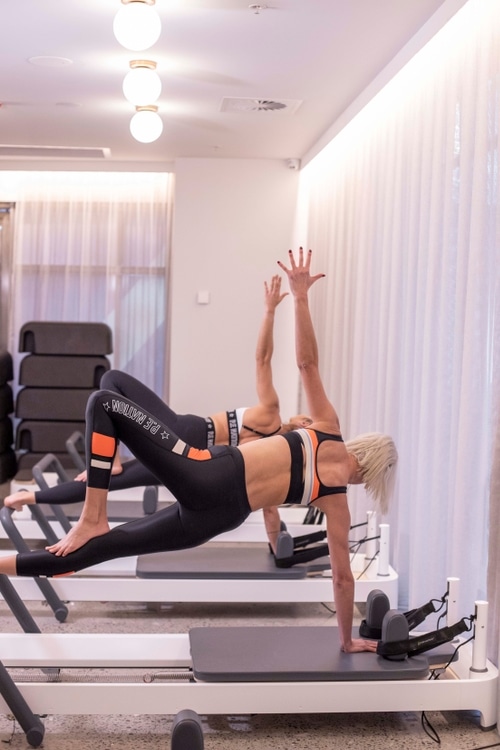“The Pilates method of body conditioning is complete coordination of body, mind and spirit”. – Joseph Pilates
The concept of Pilates is based on three principles: Breath, whole-body health and whole-body commitment; and the whole-body encompassing mind, body and spirit.
What Can Pilates do for you?
It’s the exercise of choice for those looking to strengthen, balance, lengthen (in the context of posture correction) and tone. By linking breath and movement, Pilates essentially retrains your awareness and ability to move, while staying relaxed, focused and pain-free, especially when working on previously injured or imbalanced areas. Proper breathing is essential, and helps you execute movements with maximum power and efficiency.
Five things we love about Pilates:
1. Develop a Strong Core
Pilates helps to develop a strong centre of the body, known as the “core” which is achieved by integrating the deep abdominal muscles along with muscles close to the spine. Specific exercises focus on developing endurance and strength of the core and improve muscle elasticity and joint mobility. This is essential in producing efficient movement and maximal performance for each individual, from the office worker to the elite athlete.
2. Create an evenly flexible and conditioned body, improve sports performance, and prevent injuries
The more common conventional workouts tend to work the same major muscles. Therefore, weak muscles tend to get weaker and strong muscles tend to get stronger. The result is muscular imbalance – a primary cause of injury and chronic back pain.
Pilates conditions the body as a whole, even the ankles and feet. No muscle group is over trained or under trained. Your entire musculature is evenly balanced, conditioned and flexible, helping you enjoy daily activities and sports with greater ease, better performance and less chance of injury. That’s why so many professional sports teams and elite athletes now use Pilates as a critical part of their training regime.
3. A refreshing mind-body workout
By emphasizing proper breathing, correct spinal and pelvic alignment, and concentration on smooth, flowing movement, you become acutely in tune with your body. You actually learn how to control its movement. In Pilates, the quality of movement is valued over quantity of repetitions. Proper breathing is considered to be essential to activate your muscles and to execute movements with maximum power and efficiency. It helps you to move with more control and mindfulness, with studies showing it also increases relaxation and lowers anxiety.
4. Learn how to move efficiently
Pilates exercises train several muscle groups at once in smooth, continuous movements. By developing proper technique, you can actually re-train your body to move in safer, more efficient patterns of motion – invaluable for injury recovery, sports performance, good posture and optimal health.
5. Gentle vs challenging
Pilates is a low load and also an extremely flexible exercise system. Modifications to the exercises allow for a range of difficulty ranging from beginning to advanced. Start with the workout that best suits you and increase the intensity as your body conditioning improves.
New to Pilates and wondering how to get started? We can’t wait to open our SOMA STUDIO, which will be holding both Mat and Reformer Pilates classes, ranging from beginners to advanced. We will delve into the differences and benefits of mat vs reformer Pilates in a later blog.

